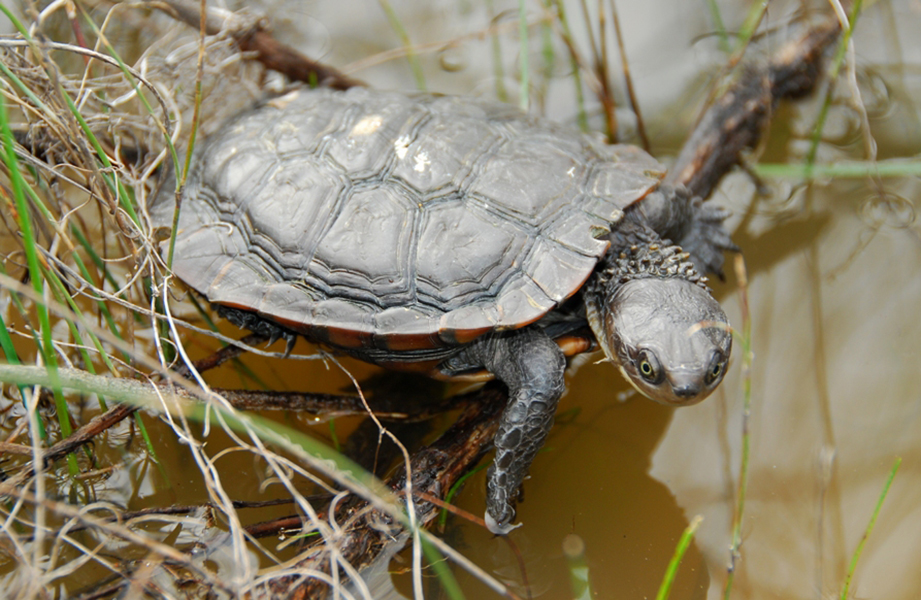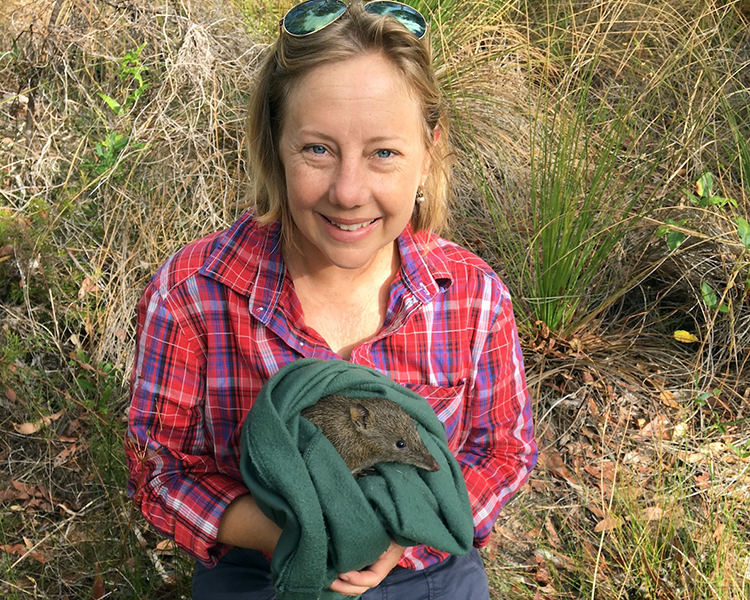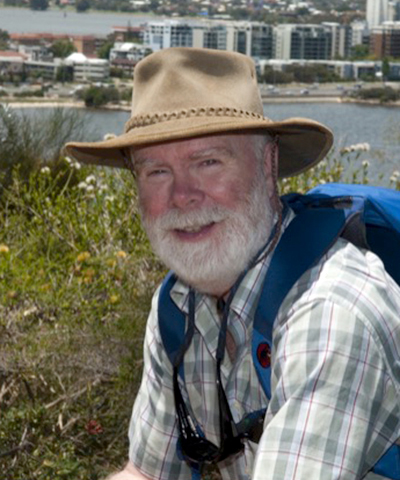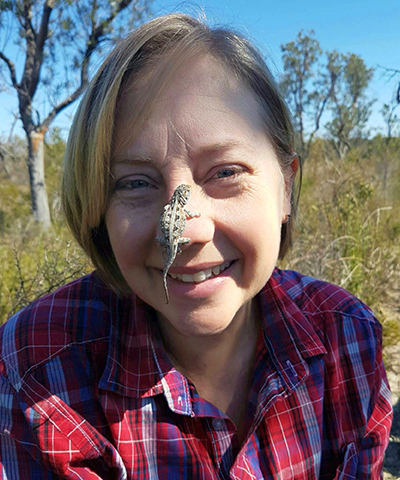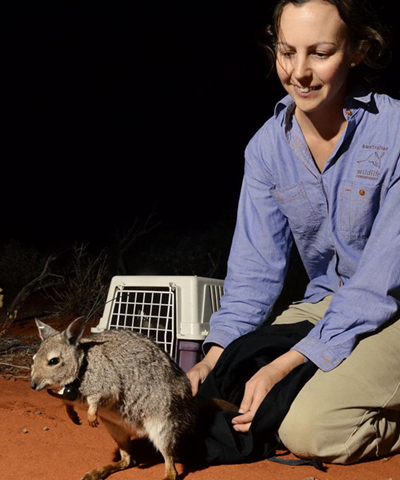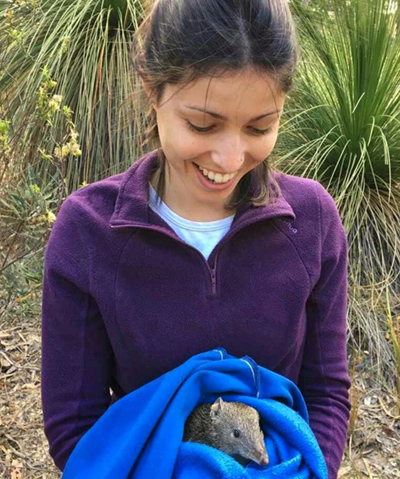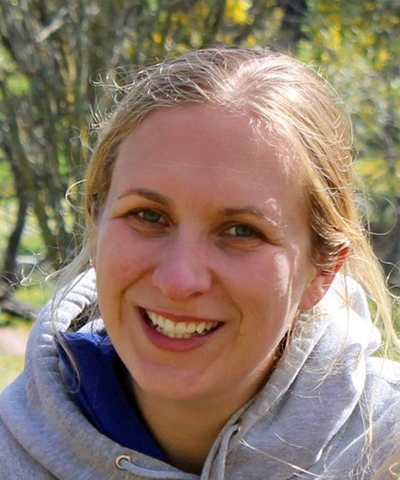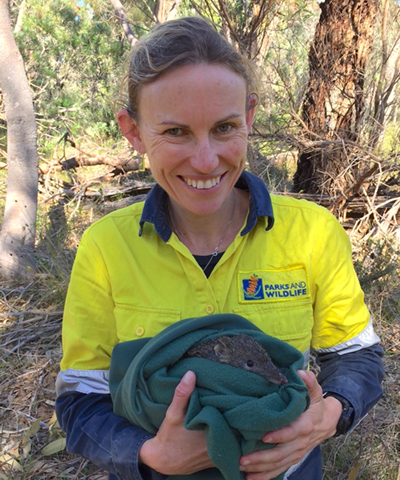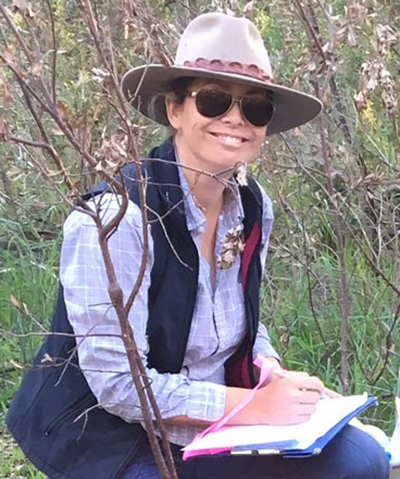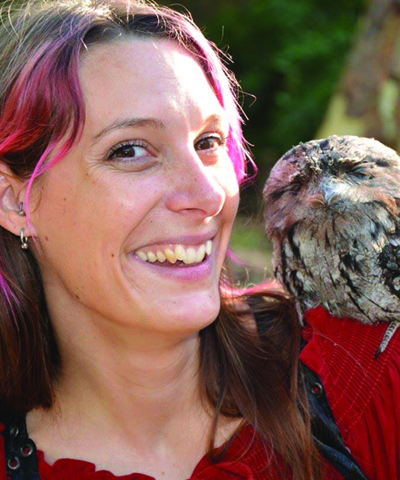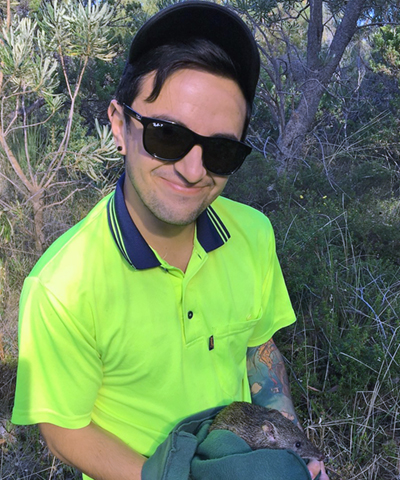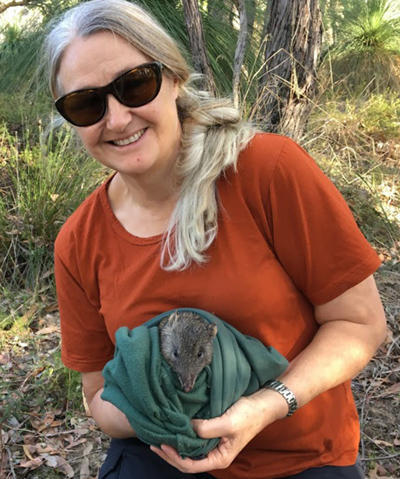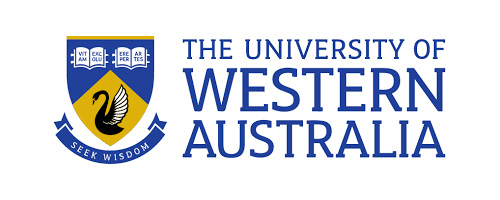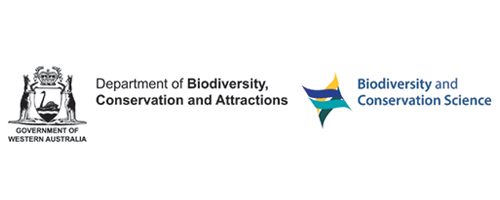
Project: 4.1.7
Enhancing ecosystem function by reintroductions of digging mammals
Project Leaders: Richard J Hobbs
Research in Brief
Many of Australia’s threatened species, such as bettongs and bandicoots, are considered ecosystem engineers due to the important functional role they provide in landscapes. Digging mammals can substantially influence ecosystem processes, such as soil turnover, litter decomposition and plant recruitment, by creating burrows for shelter or foraging pits when searching for food.
Reintroductions of digging mammals to environments where they have become locally extinct have the potential to restore ecosystem function. This project examines what happens to ecosystem processes at sites where mammals have been reintroduced.
 Quenda. Photo: Leonie Valentine
Quenda. Photo: Leonie Valentine
Why is the research needed?
Animals that forage for food or dig burrows by bioturbation alter the environmental characteristics of their habitat. Although such digging actions may be small at a local scale, they could be important for broader scale landscape processes by influencing soil and litter properties, improving moisture penetration, trapping organic matter and seeds, and subsequently altering seedling recruitment. Previous research estimated that an individual quenda (Isoodon fusciventer) creates about 45 pits each night and displaces nearly four tonnes of soil annually.
The majority of Australia’s digging mammals have undergone drastic population reductions and range declines due to a combination of factors, including habitat loss, predation and altered fire regimes. Hence, many of Australia’s environments have lost digging mammals, and the historic ecosystem function their actions once provided. Little previous research has documented or quantified the effects of losing digging mammals on ecosystem processes. Their loss could be a significant cause in the unexplained declines of some threatened vegetation communities.
Reintroductions offer an opportunity to restore both a species and lost ecosystem processes; however, it is still unclear how the reintroductions of digging mammals will alter the environment. While digging mammals are thought to have positive impacts on their environment, the landscapes they are being returned to are often drastically altered. Many environments in Australia have a landscape legacy of grazing or agriculture, which will have altered soil properties, and often a new suite of plant species, including weeds.
Understanding: whether translocating ecosystem engineers can help to restore ecosystem processes; what the effects are likely to be; and if there could be any unintended negative consequences in transformed landscapes, is critical for informed conservation decisions.
 Quenda diggings. Photo: Leonie Valentine
Quenda diggings. Photo: Leonie Valentine
How will the research help?
This project will greatly increase understanding of the effects that digging mammals have on their environments, and consequently of the effects that have been lost in areas where digging mammals are now locally extinct.
It will provide quantitative data on how digging mammals interact with their environment, as well as make predictions on how reintroductions may enhance (or hinder) ecosystem restoration. By collaborating with organisations conducting reintroductions, the outputs from this project will provide information about what to expect when reintroducing digging mammals.
What research activities are being undertaken? This project will undertake fieldwork, glass house trials and literature reviews to extend understanding of how digging mammals interact with their environment. Field work will be occur in remote arid environments, open woodlands and urban bushland sites where digging mammals have been reintroduced, or occur naturally, versus where they are absent.
Areas with digging mammal disturbance will be compared to areas where they are absent (using exclosure plots where possible) looking at:
- soil properties, including nutrients and microbes
- leaf litter properties, including fuel loads
- vegetation, including extent of native or introduced plant cover and germination rates
Experiments examining litter decomposition and seedling recruitment and health will be conducted in the field. This includes comparing seedling recruitment in spoil mounds and pits created by digging mammals, with control areas. Using natural foraging pits, or artificially creating them, researchers will spread native plant seeds and examine the seedling responses over time, relating these responses to the soil and microbial properties.
To further understand the mechanisms involved in how digging mammals manipulate their environment, soil from digging mammal pits, spoil mounds and control areas in the field will be transported to glasshouses for additional seedling growth and soil microbial experiments.
Who is involved?
The project is being led by the University of Western Australia (UWA) who are collaborating closely with the West Australian Department of Biodiversity, Conservation and Attractions (DBCA). Other project partners include the Australian Wildlife Conservancy, City of Joondalup and Edith Cowan University.
Where is the research happening?
Most of the research is happening in Western Australia, at a combination of remote and urban sites where digging mammals have been reintroduced or persist.
Field work will be conducted in a range of DBCA-managed lands (e.g. Yalgorup National Park, Dryandra Woodland Conservation Area), Matuwa Kurrara Kurrara Indigenous Protected Area, the UWA Future Farm and on private property (e.g., Bingally) in the wheatbelt of WA.
Research is also taking place in urban bushland reserves, Craigie Bushland and Kings Park, in Perth. Some research will also be conducted at the AWC Faure Sanctuary as well as Yookamurra Sanctuary in South Australia.
When is the research happening?
The research is occurring over six years from 2015 to 2021.
Further information
For more information please contact:
Leonie Valentine - leonie.valentine@uwa.edu.au
Top image: Southern Brown Bandicoot. Photo: Tim Bocek CC BY NC SA 2.0
